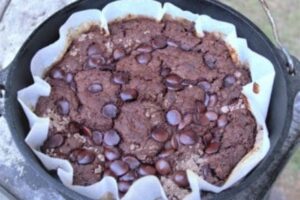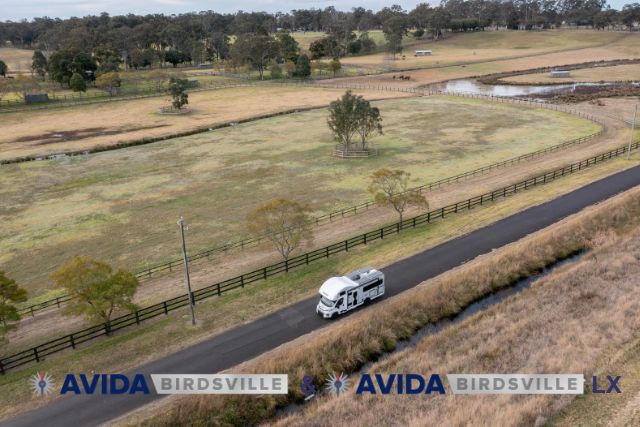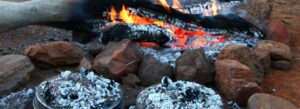
Nothing beats a camp oven over an open fire when you are camping. The humble camp oven is not only to cook stews, a camp oven is so versatile that you can cook, snacks, entrees, main and dessert!
Some history on the camp oven or known globally as the ‘Dutch Oven’ where it originated in the Netherlands in 17th century. Made of iron cast from sand moulds, the dry sand created a smooth surface which improved cooking as there was more contact points for the food. It also brought a higher aesthetic quality to the cookware (something they’re known for even today).
Whilst on a trip to the Netherlands in 1704 an Englishman, Abraham Darby witnessed the potential of this product and in four years set about creating a patent, that was then sold through out the British Isles and the American colonies.
Over time the pot has evolved by the American’s with various implements made to enhance the usability of the Dutch oven. These pots were valued for elements like the durability, but also for just how versatile they were. You could sauté, boil, bake, you name it. Often, this versatility along with their size meant it was easy to make an entire meal in just one pot. Some things do change with time but a desire to avoid doing more dishes than necessary is clearly not one of them. Colonial Dutch ovens were considered precious enough to be mentioned in many wills and have been handed down by generation and generation.
In spite of its enduring popularity over the years, it wasn’t all plain sailing for the Dutch oven in the 20th century. Following the First World War, the popularity of the product declined. Fortunately for our taste buds, people began to rediscover these amazing pieces of cookware technology in the 70s and 80s. Chefs and home cooks alike rediscovered what made them popular in the first place.
Today Dutch ovens or similar pots exist throughout the world. They have names like camp oven or bedourie oven in Australia, potjie amongst the Afrikaans of South Africa, chugun in Eastern Europe and Central Asia, sač in the Balkans, braadpan in its native Netherlands, and tetsunabe in Japan. Clearly, this cooking tool has something going for it if so many varied cooking cultures have turned it into an essential tool.
The Bedourie oven is an Australian adaptation of the camp oven (Dutch oven). Drovers working on Bedourie Station, in western Queensland, found that the heavy cast iron camp ovens they used for cooking would often break as a result of falling from their pack horses. The Bedourie oven was developed in response to this problem. Formed from mild steel, it is lighter and less brittle than cast iron, and will not break if dropped.
Are you crazy about your camp oven? Australia has a festival – The Australian Camp Oven Festival. Usually held around October each year, it has been running since 1999 in Millmerran (82km from Toowoomba, Queensland). Take a look here it will be something different to do this year!
Gluten Free Damper
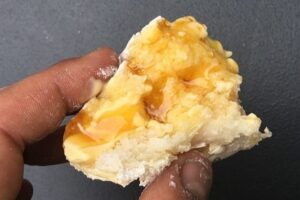
Dutch Oven Banana Bread
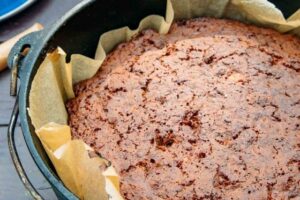
Cheese burger pull apart scrolls
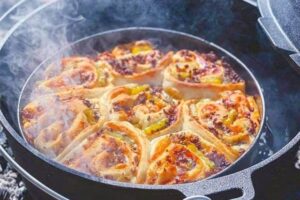
Dutch oven buttermilk biscuits
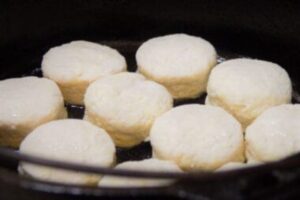
Seafood and Chorizo Paella with Bell Peppers
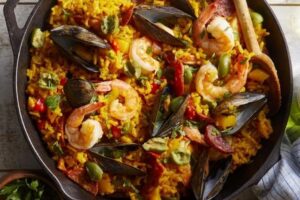
Steak with creamy mushrooms and spinach
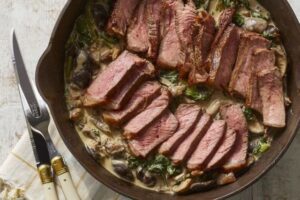
White Wine Coq Au Vin

Mick’s camp oven roast lamb
Apple cobbler
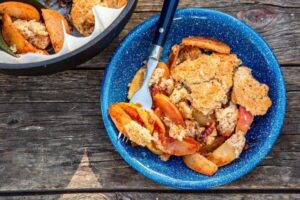
Campfire donuts

Cinnamon nut pull aparts

Chocolate cherry dump cake
